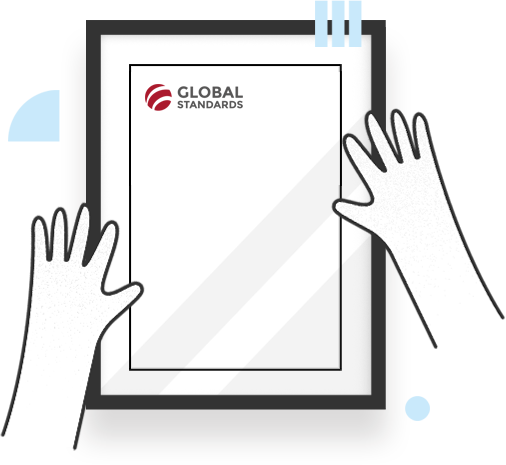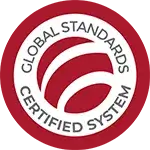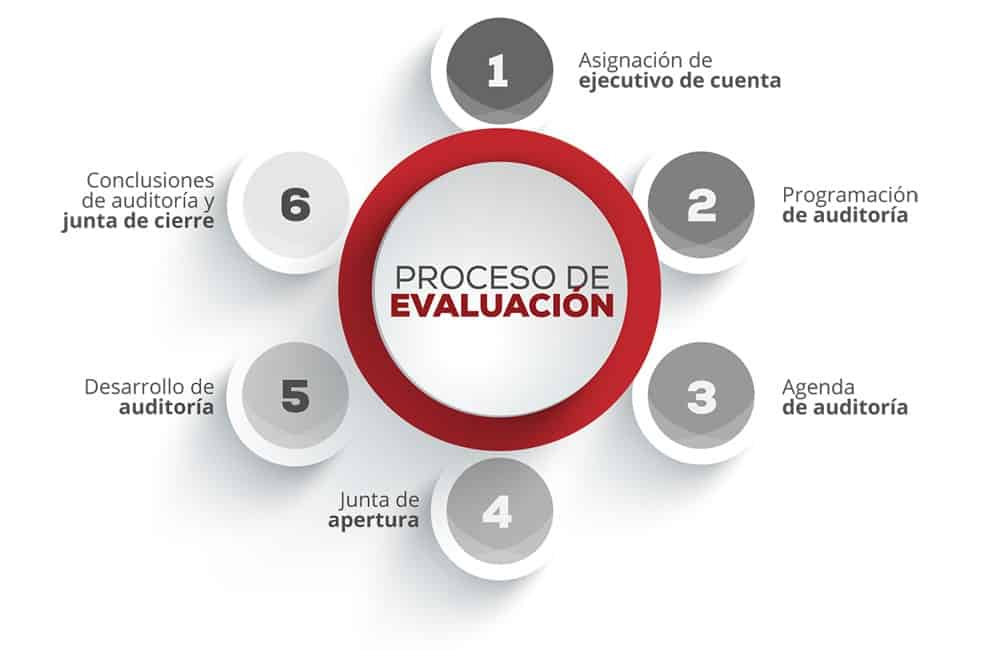

CERTIFICACIÓN DE CUMPLIMIENTO
AUDITORÍAS A PROVEEDORES
Certificadas por Global Standards
Las auditorías de conformidad a proveedores (también llamadas Auditorías de 2da Parte) están basadas en modelos que contemplan los requerimientos específicos de los clientes, mismos que también podrían estar alineados a los requerimientos de normas nacionales e internacionales.
Nuestra firma administra y controla las auditorías a proveedores a través de una plataforma digital que permite mantener los registros y evidencias. De la misma manera, tiene la oportunidad de monitorear el desempeño de los sistemas de dichos proveedores y, en caso de solicitarlo, el cliente podrá acceder y usar la plataforma para mantener la vigilancia y cumplimiento de sus proveedores.
Una vez autorizada la auditoría por parte del cliente o proveedor, el siguiente paso será llenar el checklist enviado por Global Standards como medida de autoevaluación previa a la ejecución oficial de la auditoría. Cuando se demuestra que existe un nivel de cumplimiento aceptable por parte del sistema del proveedor, se procede a planear el evento oficial y se desarrolla con base a los requerimientos del modelo establecido. Por último, los resultados del evento son enviados al cliente y, en caso de que lo autorice, se hacen llegar al proveedor.
CERTIFICADO DE CUMPLIMIENTO
Auditoría bajo la metodología de Global Standards

BENEFICIOS
MANTENIMIENTO COMO PROVEEDOR ACTIVO
Cumplir con los requerimientos establecidos por tus clientes, para mantenerte activo como proveedor.
CUMPLIMIENTO REGULATORIO
Cumplir con las normas o regulaciones aplicables.
OPERACIÓN BAJO UN SISTEMA DE GESTIÓN
Mantener un sistema de gestión apto y actualizado que permita brindar confianza para obtener nuevos clientes.
CONFIANZA PARA LOS CLIENTES
Generar confianza en la cadena de suministro.
PROCESO DE EVALUACIÓN
Global Standards cuenta con un grupo de profesionales dedicado a aplicar la metodología de evaluación de proveedores a través de la planeación, ejecución y conclusión de auditorías, utilizando este modelo de evaluación:

ASIGNACIÓN DE EJECUTIVO DE CUENTA
Global Standards asignará un ejecutivo de cuenta, que será responsable de cotizar y facturar el servicio, además de mantener informado al cliente sobre el proceso de auditoría.
PROGRAMACIÓN DE AUDITORÍA
Nuestra área de Planeación coordinará la logística con las partes interesadas para determinar la fecha, lugar, documentos y tipo de auditoría a desarrollar.
AGENDA DE AUDITORÍA
El auditor asignado preparará una agenda tentativa que presentará las actividades a desarrollar durante la auditoría.
JUNTA DE APERTURA
El auditor inicia su auditoría con una junta de apertura y un breve recorrido por las instalaciones del cliente; en esta junta se muestra el protocolo de auditoría, indicando los objetivos de la misma y las responsabilidades del auditor y los auditados.
DESARROLLO DE AUDITORÍA
Durante el desarrollo de la auditoría se recolecta evidencia objetiva mediante entrevistas con el personal involucrado en los diferentes procesos, de acuerdo al alcance de la evaluación para determinar el nivel de cumplimiento.
CONCLUSIONES DE AUDITORÍA Y JUNTA DE CIERRE
Con base a las muestras de evidencia recolectadas por el auditor, se determinan las conclusiones y resultados de la auditoría. El auditor realizará una junta de cierre para informar los hallazgos de auditoría.

COTIZA TU
CERTIFICACIÓN DE CUMPLIMIENTO
Cotiza tu Auditoría de conformidad a proveedores
¿Estás listo para dar el siguiente paso?